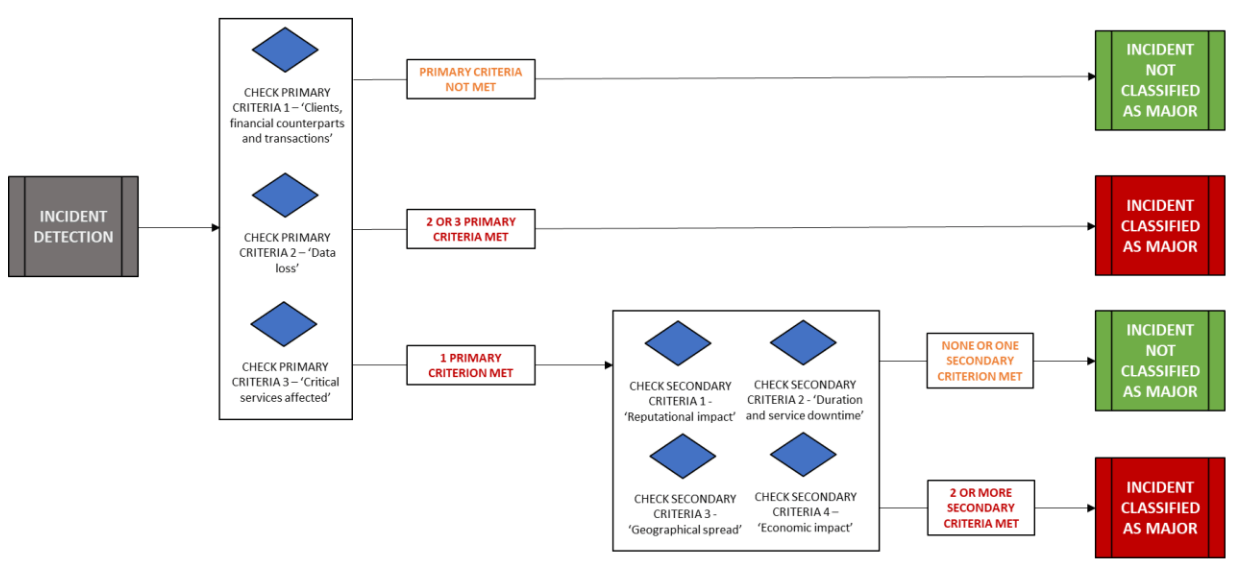Since it may be challenging for financial entities to identify the number of clients affected or the financial counterparts or the number or amount of transactions impacted, the draft RTS envisages that financial entities can resort to estimates.
Financial entities shall measure the duration of an incident from the moment the incident occurs until the moment when the incident is resolved. The detectable record should not be understood as a recording in an incident management system but as a traceable log in a network or a system.
The threshold of service downtime of critical functions is longer than 2 calendar hours - with exceptions. The total ‘duration of the incident’, the ESA consider appropriate a threshold of 24 hours.
ESA also introduces the criteria for recurring incidents that will have to be classified as major where, in the aggregate, they meet the classification criteria and materiality thresholds in the preceding 3 months for most financial entities. For central securities depositories, central counterparties, trading venues, trade repositories, data reporting service providers, credit rating agencies, administrators of critical benchmarks and securitisation repositories, the period is up to 12 months.

